#pedantry
Explore tagged Tumblr posts
Text
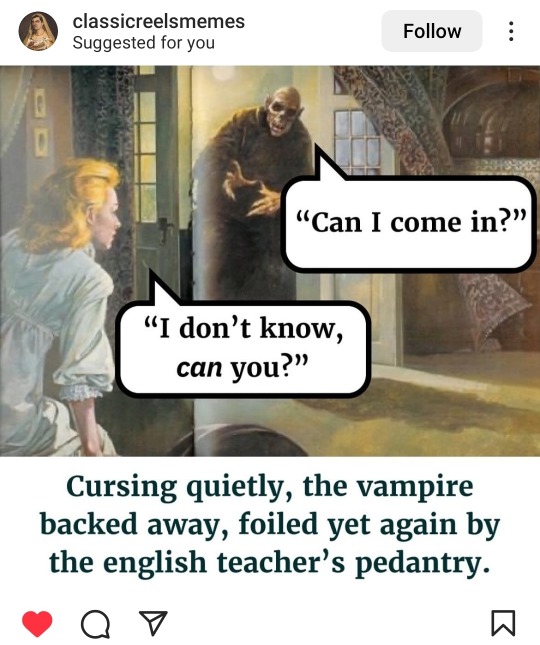
In honor of my good friend Jonathan's travels taking an unusual turn that sadly cannot be wholly attributed to the paprika hendle.
I bet Mina would have this answer chambered and ready to fire though...
245 notes
·
View notes
Text
Lore brain: This setting has a fair amount of mind control effects that work on (very) loosely similar principles to real-world hypnosis (inducing a suggestible/trance-like state and giving instructions that the subject will accept more easily in that state). They might even share a lot of the same verbal and psychological techniques...
Pedantry brain: But hypnosis is a real phenomenon that gets misrepresented and mislabeled so much... and since there's no reason it wouldn't work in-setting people would probably want to differentiate it there as well.
Lore brain: Alright, how about "mesmerism" for supernatural hypnosis-like effects and "hypnosis" for the psychological/linguistic techniques.
Pedantry brain: Ooo, and that also lets you specify hypnotic verbal techniques and the like being used alongside mesmerism, or notably not being used. Okay, let's go with that distinction!
Second, worse pedantry brain, despised by the first: In terms of etymology--
Pedantry brain: Oh no. no you don't.
Second, worse pedantry brain: In terms of etymology. Hypnosis has greek roots while Mesmer was just Some Guy from the 1800s or something right? So since the supernatural stuff was almost certainly discovered before the verbal techniques it would make more sense for hypnosis to be used to mean the supernatural inducement of trance-like states, while mesmerism refers to what we know as hypnosis!
Pedantry brain: I'm going to stab you.
Lore brain: Hm, that could be an interesting way of distinguishing this setting from the real world and showing how the supernatural has influenced--
Pedantry brain: I'm going to stab both of you.
Second, worse pedantry brain: technically, as we're all fictitious representations of the author's mental processes with no physical form--
#sil.txt#worldbuilding#shitpost#pedantry#in sum: it would be Really Funny to make 'hypnosis' in my setting specifically not mean real world hypnosis#which in turn has another word for it. however actually writing that would make pedantry brain punch drywall and explode me
62 notes
·
View notes
Text
The idea of a Schelling point (or focal point) is that it's something two people can arrive at without prior coordination.
It really drives me nuts when people call something a Schelling point and just completely forget about the "without prior coordination" aspect. Like, if I go to New York and a guy calls me and says "hey, let's meet at Grand Central Station at noon", that's definitely different from us selecting Grand Central Station in the absence of talking to each other.
The "without prior communication" thing is what's interesting about a Schelling point. It's what makes it a Schelling point.
And yes, this is about Nate Silver's On the Edge again, I'm sorry.
Bitcoin is not an example of a Schelling point, and it's absurd to me that you could write a book that's at least partly about game theory and claim that it is. There is quite a lot of communication happening with regards to "what's popular", there are people whose entire job revolves around screaming to the rooftops about how awesome particular cryptocurrencies or artworks are. This is entirely explained by network effects, first-mover advantage, and active communication.
He also makes the argument that art prices are an example of Schelling points, and no, that's not true, they're the result of a lot of complex social and market dynamics that involve huge amounts of explicit communication and coordination.
58 notes
·
View notes
Text
Pitch: a Make Some Noise episode that starts off with the "prompts our players have never seen before" thing and Brennan Lee Mulligan, but in fact all the prompts HAVE been used before, but they've been shuffled for new contestants/haven't been used with THESE contestants
If this were Game Changer, points would be awarded by how quickly they clocked it
76 notes
·
View notes
Text
ALL CHAPS ARE ASSLESS
If they had an ass, they'd be trousers.
Thank you for coming to my TedTalk.
416 notes
·
View notes
Text
I've seen a number of people referring to the post-October7th surge of explicit Leftwing Antisemites as "Tankies." While not unreasonable per-se, I would still like to quibble with this terminology; while most Tankies indeed seem to be happily part of this wave of Judenhass sentiment, they are not, I feel, a sufficient proportion to reasonably categorize the whole movement to be a subset of the Tankies.
Rather, I contend, these Leftwing Antisemites are more aptly described as Strasserites.
139 notes
·
View notes
Text
As is well known*, the rule** for turning proper names that end in an "s" into possessives is that you add 's, unless the name is Jesus or Moses, in which case you just add an apostrophe. So "Jesus' tears" but "Harris's tears".
But I just hit an interesting edge case. What about people who are named "Moses" or "Jesus", but aren't the Moses or the Jesus? What's the rule there?
* By me and like three other people
** followed by me and like three other people
55 notes
·
View notes
Text
Everyone come express your opinions on mathematical convention and notation. 100 questions, all optional.
@noelements-setempty
108 notes
·
View notes
Text
Saying that things are arguably other things is great because you're not asserting that it is that thing, you're merely asserting that one can frame an argument that it's that thing – and let me tell you, I'm prepared to make some stupid fucking arguments, so it's basically always true.
1K notes
·
View notes
Note
Can we have the high points of the tea lecture, please? I... may or may not do one of those tea behaviors you called out.
Sure!
Black tea--the dried and oxidized leaves of Camellia sinensis--requires a higher brewing temperature than coffee. A delicate full-leaf tea might brew decently as low as 200 F, which is the top end of the range for coffee, but for the ordinary stuff in your teabags, you want the hottest water you can get, just off the boil. This shocks the flavor producing compounds out of the tea--and if it's something fairly cheap, most of the flavor is going to come from that initial instant of contact with boiling-hot water.
The water that comes out of a water cooler, the hot water tap on a big coffee maker, or a Keurig simply does not get hot enough to bring out that first burst of flavor. It's going to taste flat. Again, a more delicate tea might turn out OK if it has subtler flavors that come out in the later stages of the steeping process, but with regular teabag tea, it's mostly going to be tannins.
That's why, if you have any choice in the matter, you should always make tea with water that you have personally boiled. (The little pot of hot water they bring you in a restaurant usually isn't hot enough, either.) If coffee-maker water is all that's available, green tea likes a lower temperature, so that's an option.
Next, the reason Keurig tea pods suck in particular is that in addition to the water not being hot enough, tea is supposed to steep, usually for 3-5 minutes. The Keurig is not set up for that; it just shoots the water through that little cup of tea-leaf dust and out into your cup, ready to disappoint you.
And that's before you get to the cost (exorbitant) and the excess plastic waste. It's sort of understandable in the case of coffee, because before K-cups et al., there wasn't an easy way to make a single fresh cup of coffee without making a whole production of it.
With tea, there is: we call it the teabag; you can buy it in a box of 100 for about what it costs for 8 or 10 K-cups.
If you have to use a Keurig--at work, or somewhere like that--just use it to heat the water for a regular teabag. That way, you can at least steep it properly, and you aren't throwing money away to have an even worse tea experience.
19 notes
·
View notes
Text
Taxonomy rant
I’m sympathetic to claims that Linnean binominal nomenclature -- you know, the Homo sapiens Felis catus Quercus robur thing -- is inadequate to describe species as they exist in nature. But the problem is not with Linnean names, it’s with names period.
We interact with the world by imagining it’s made up of “things”, of discrete objects that belong to categories, have properties, and interact with each other; and to these “things“ we give “names”, which allow us to think and talk about them. Which is fine, as I don’t think we’d be able to interact productively with the world if it wasn’t for this level of naive abstraction. Imagine if we had to re-deduce the physical properties of each individual chair from its constituent molecules, instead of imagining the category “chair” and a standard protocol to make use of its members.
But then we fall back in the misconception that “species” are discrete, bounded categories built on variation around a central ideal type -- the Platonic essentialism that Richard Dawkins rightly considered the single greatest obstacle to most people in understanding biology and evolution. In reality, there is no “species” beyond the sum of all the individuals that make it up, which form smooth continua of variation and blur at the edges into related species.
We made a brave attempt at defining “species” as a group of individuals capable of interbreeding. This patently fails with bacteria and most protists, which reproduce asexually, and only engage in transfer of genes independently from reproduction. (And bacteria will happily accept DNA from different phyla and kingdoms, as if we could get pregnant from tree pollen.) It also raises the thorny question of what counts as interbreeding. Can two species interbreed if they bear viable but infertile offspring? What if the offspring is fertile, but sicklier than non-hybrids? What if they can interbreed just fine, but just choose not to because they have different mating signals? Even if you choose arbitrarily one step of the ladder of noninterfecundity as your criterion, populations that are not constantly mixed will drift away from each other over time as they accumulate new mutations.
What of ring species, which show that the ability to interbreed is not transitive, so that A can breed with B, and B can breed with C, but C cannot breed with A? In any given moment of time these are fairly rare, but if you pry open time and look at life diachronically, you will see that every single living population is like that. There is an uniterrupted chain of parents and children in which each ring obviously belonged to the “same species” of the previous and the next (or the previous hundred and the next hundred), but the first ring of the chain is a lancelet-like worm-fish thing, and the last is a turtle or a hummingbird or a cheetah.
You can choose to measure genetic distance between populations and set an arbitrary maximum as your species threshold, but distance is again not transitive, and again you run against bacteria -- a population of bacteria, allegedly all of the same species, can have quite different genomes from cell to cell, between environmental pickup of DNA, quasi-sexual transfer, and viral infections.
Shall we then treat individuals as unit of analysis, rather than species? (With a trillion billion billion bacteria living on Earth at any given time? Good luck) But then we run in the same issue -- where are the borders of the individual? Meiosis and fertilization at least create a clean enough break between generations in sexually reproducing species, but what of those parthenogenetic aphids and rotifera in which each individual is just a clone grown from a cell of their mother? What of budding hydrae, and clonal colonies of polyps and trees, in which an “individual” simply grows out of another as if they were but a limb?
For that matter, consider our gut bacteria, which outnumber by far our genetically human cells, and yet are a necessary part of our body no less than our own tonsils or gall bladder, despite being more unlike us than ferns. Consider mitochondria, of which there are a thousand in each eukaryotic cells, without which every oxygen breather would cease to be, and who still retain their own bacterial genome and transcription after two billion years of coexistence. Consider ERV sequences, which are but viruses that accidentally copied themselves into cells about to divide, and which make up at least 5% of the genome of every single human cell (parts of the genes for the mammalian placenta may come from there).
There are no species; there are no individuals either. Even cells and genes are on thin ice. There is just Life, a seething, shoggothy four-dimensional mass rooted in some Archean hydrothermal vent and stretching cancerous tendrils across the aeons, of which species and individuals are merely local clusters and sub-clusters that we point out and give a name to because, much like with constellations, it’s convenient for certain purposes. (Including making sense of Life and Its history as best as we can.)
Enough with that “did you know that sharks are not really fish?” nonsense. Embrace taxonomic nihilism. It is an objective fact about the physical world that the lineage of sharks diverged from the lineage of tunas before the lineage of tunas diverged from ours. It is not a fact that sharks “are” or “aren’t” fish, because categories are phantoms and nothing actually “is” except wave functions and the void. (It is also a fact that sharks are not Osteichthyes, but only because the word “Osteichthyes”, unlike the word “fish”, was defined in a specific way that excludes sharks.)
In sum, I support keeping Linnean nomenclature around on the grounds that
We need to give names to things anyway, and
I have a fetish for Greek and Latin roots. Dicopomorpha echmepterygis. Hrngh.
#taxonomy#pedantry#biology#rambling#life is an scp#that alien god#not sure if entirely endorsed by myself but mostly pretty much
152 notes
·
View notes
Text
The purpose of language is communication. If someone communicated what they meant successfully, they used language right. Anything else is pedantry.
4 notes
·
View notes
Text
What Came First: The Chicken or The Egg?
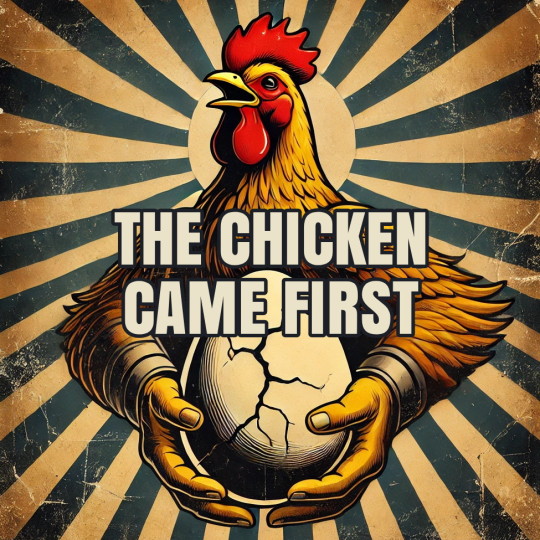
Dear Dr. Tyson,
First, I must commend your valiant and seemingly conclusive answer to the age-old question: Which came first, the chicken or the egg? Your application of evolutionary biology to a question that traditionally lies within the philosophical realm is a prime example of science's ability to engage with metaphysical dilemmas. However, I would argue—after an excessive amount of time spent obsessing over this very topic—that, by your own logic and through a more pedantic refinement of the terminology involved, the answer is not as settled as you suggest. In fact, the chicken, not the egg, must have come first.
Let me explain.
Your conclusion, that the egg came first, hinges on the broad evolutionary assumption that the question refers to any kind of egg—especially an evolutionary precursor to the chicken, such as the egg of a proto-chicken. You argue that a mutation in the genetic material of the proto-chicken resulted in the first true chicken hatching from a non-chicken egg. This is biologically sound, and I do not dispute your evolutionary framework.
However, this argument, elegant though it may be, sidesteps the nuance embedded in the original question. When one asks "Which came first, the chicken or the egg?" we must assume, by context, that we are referring specifically to a chicken’s egg. That is, an egg laid by a chicken that contains a chicken. The question does not simply ask about the evolution of all egg-laying creatures; rather, it implicitly narrows the focus to chickens and their reproductive mechanisms.
To answer this question with the precision it demands, we must re-examine the terms. If we take "egg" to refer to a chicken’s egg—as opposed to the egg of a proto-chicken or any evolutionary predecessor—then we must acknowledge that a chicken’s egg cannot exist until there is a fully formed chicken capable of laying it. The egg laid by the proto-chicken was indeed the vessel that contained the first genetic chicken, but it was, by definition, a proto-chicken’s egg, not a true chicken’s egg. A chicken’s egg can only come from a chicken.
So, following this semantic precision, the first chicken must have existed before the first true chicken’s egg could be laid. In other words, the chicken—the fully formed, genetically distinct Gallus gallus domesticus—must have come first to produce the first true chicken’s egg.
Your conclusion, therefore, though derived from impeccable science, relies on a subtle but crucial imprecision in language. The question as posed is not just about evolutionary timelines but also about biological classification. And while it’s tempting to sidestep the semantics in favor of a neat evolutionary narrative, doing so undermines the integrity of the original question, which, by its nature, demands we consider the chicken and its egg as distinct from their evolutionary ancestors.
Thus, I submit to you that the answer, at least in this more rigorously defined framework, is the chicken.
Of course, you have more significant scientific conundrums to tackle, and this playful philosophical debate may not warrant such an unhealthy degree of focus. But I hope you’ll appreciate the spirit of this response, as it mirrors your own commitment to using science to address even the most absurd of human questions.
Yours in intellectual camaraderie,
The Critical Skeptic
#chicken or egg#philosophy#neil degrasse tyson#biology#evolution#rebuttal#science#thought experiment#logic#reason#pedantic#pedantry
10 notes
·
View notes
Text
The Worst Ant Video on the Internet
I did it. I found the worst ant video on youTube. I'm not going to link to it because it's *so* bad that I can't rule out the very real possibility that someone made it this bad just to bait people into watching it. But, let me give you a little taste of the horror. The calamity starts with the title:
"Most Dangerous Ant Spices"
Yes. "Spices."
Dangerous ant spices? Are we talking tarragon and cumin? Are these spices dangerous to ants? Or is this a warning about the dangers of ant cooking?
The spelling error is bad enough, but also the whole concept of such a list is a little... gauche? Why is there this idea that the only thing that makes insects interesting is thinking about how much they could kill you?
But-- even this I could excuse. After all there are a few ants with dangerous stings. But, what do you think is on the list? Do you want to know? Too bad I'm telling you anyways:
10. Harvester ant (This ant has a sting as bad as a bee. So, not a terrible entry for the bottom of this list...But the photo they used)

That is NOT a harvester ant. That is a weaver ant, genus Oecophylla. Weaver ants are tropical and use silk to make their nests in trees. Harvester ants are from the families Pogonomyrmecini and Stenammini, these are desert-dwelling ants who collect seeds and live underground. They don't even look alike at all. They do both have a sting, that's about as bad as a bee sting.
Maybe the next ant on the list will be better...? (of course not)
9. Redwood ant (What did wood ants do to deserve this??)

I don't even know what ant they meant by this. They showed an image of Formica rufa, the wood ant, and rufa do have a reddish color ... so maybe they are also called "redwood ants" But, why are these ants on a list of "Dangerous Ants" ?? They are a protected species that lives in the pine forests of Europe! They don't sting and can't even effectively bite a person. Their colonies are huge. They build mound nests of pine needles a meter in height and live in groups of 100s of thousands. They are gentle custodians of the forest enriching the soil and keeping the arthropod populations under-control. Beneficial ants that are so well loved they are protected from poaching since without them the forests would not thrive as well.
8. Odorous house ant (lol what?)
A few years back there was a recurring argument online about if ants have a smell. People who grew up in areas with the odorous house ant know that some ants, when crushed smell like coconut... or rotten face cream. The smell isn't exactly overwhelming and it's only around when the ants are crushed or injured. But it's very distinctive nothing is exactly like it. Most ants have no real smell. So people argued about this online.
But other than the smell there isn't much to say about these little ants. They are tiny, can't sting, can't bite. They can be house pests. So they are dangerous to your poptarts. Might smell a little odd for a few moments if you step on one. If this is "Dangerous" I don't even know.
7. Leafcutter ant
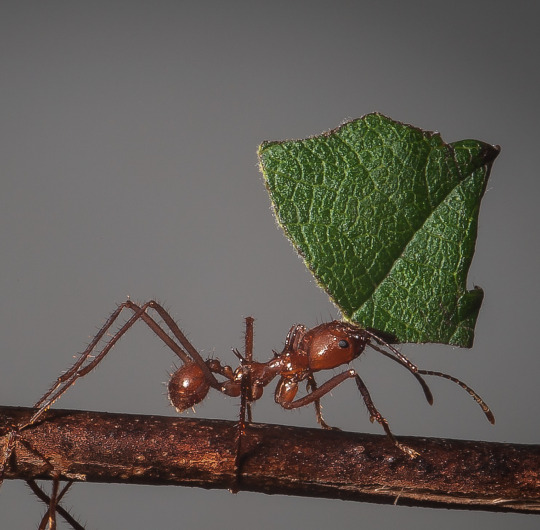
These ants are remarkable but they can't sting, they do have a powerful bite so I guess that's a little "dangerous" ... the majors could draw blood biting you. And they can defoliate a tree overnight ... so that's kinda ... "dangerous" ... at least they used the correct image.
6. Argentine ant
(is this a list of ants... most dangerous to other ants?)
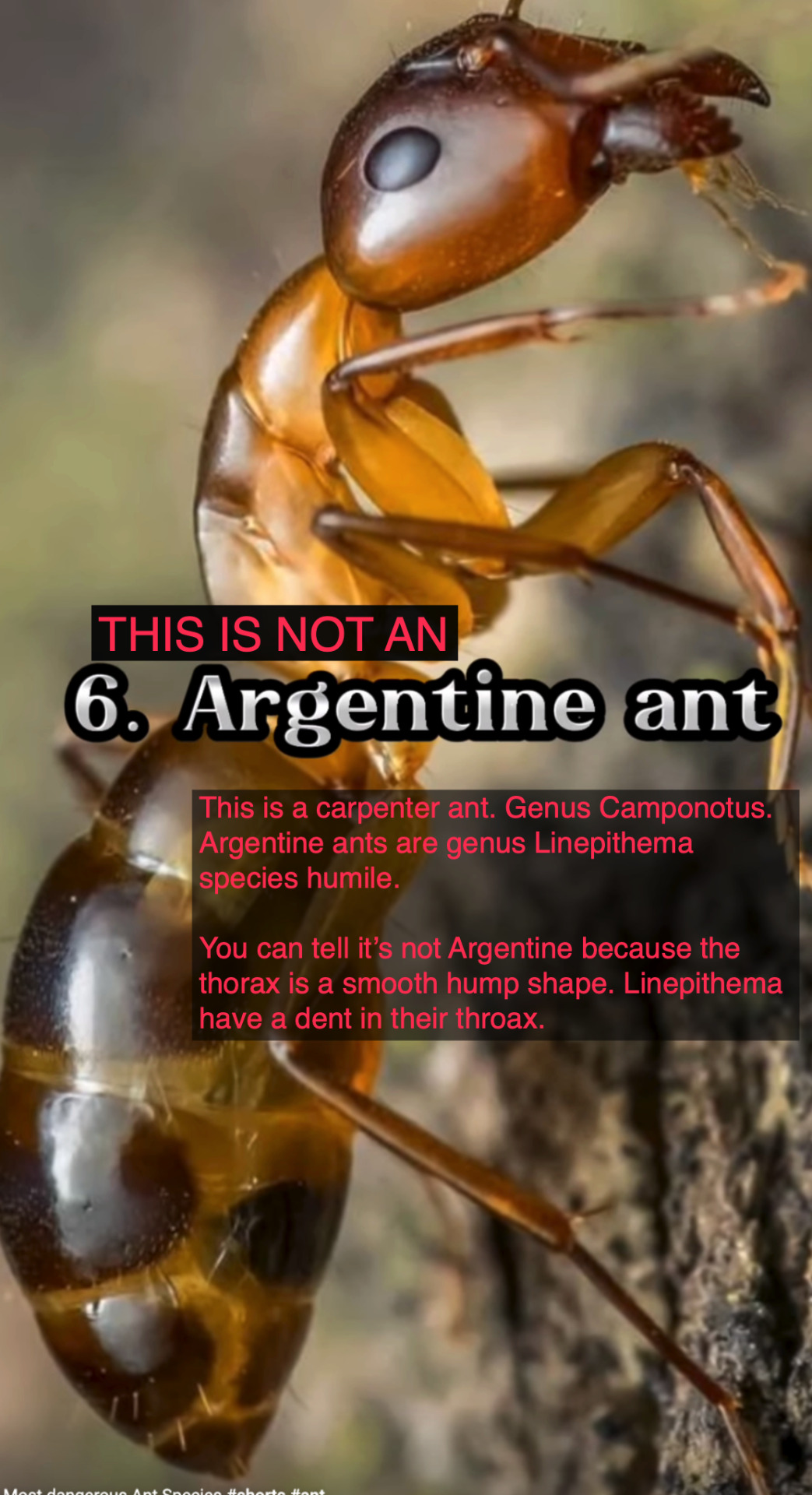
Another ant that can't sting or bite. Linepithema humile is an invasive species and a huge threat to ant diversity in some parts of the world. This makes it even more unfortunate that the video, like many "resources" online used the incorrect photo for this ant. If you search for this ant with the common name "Argentine Ant" you will probably find a photo of another species incorrectly identified as an Argentine ant-- and, since it's invasive, incorrectly identifying one of your local beneficial species of ant as Argentine could lead to killing off the wrong ants. So. I edited this photo as it's not just misinformation... it is destructive misinformation.
Neither the ant in the photo, nor Linepithema humile are in any way "dangerous" except for the danger posed to native ants.
5. Carpenter ant (YES every single one!)
They did at least use a photo of one of the thousands of carpenter ants (Genus Camponotus) for this one. But that doesn't make up for labeling a harmless Campontus as an invasive in the last list item.
None of the Carpenter ants can sting or be dangerous. Some have a significant bite, but not as bad as the leafcutter ants lower on this list.
4. African ant (You aren't even trying anymore.)

I've decided making up something called an "African ant" putting it on a list of "dangerous ants" then using a photo of a trapjaw ant (Odontomachus speceis) that isn't even from Africa is probably racist ... somehow.
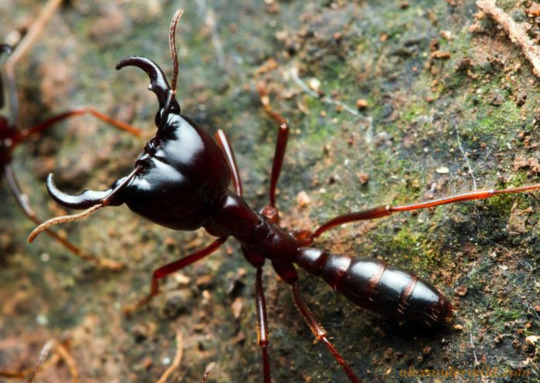
I think they meant to show the most famous ants from Africa, the driver ants. (Genus Dorylus) This is a genus of army ant that roves through the forests in columns of thousands. Their majors look vaguely like trap jaw ants. And they are a little "dangerous" ... though they are also well-loved since they will clean your home and land of pests.
3. Red fire ant (Guess what the photo showed. GUESS.)

Oh. NOW they show a harvester ant. I think that people don't think that real fire ants look as formidable as their reputation. So they use photos of the larger more beefy looking harvester ant instead. The common name "fire ant" refers to Solenopsis invicta, and invasive species with the ability to sting.
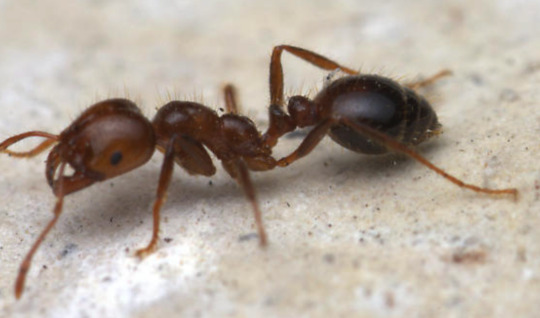
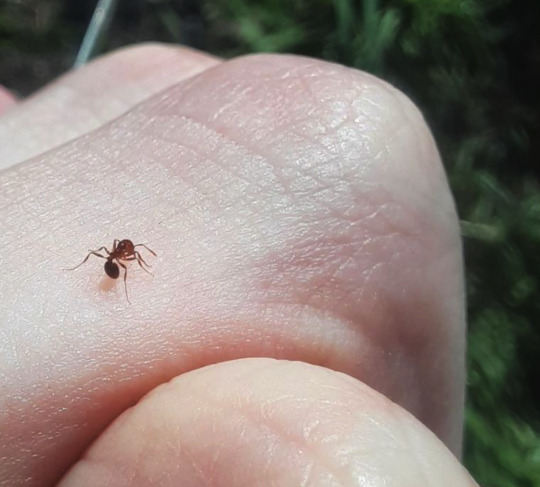
The sting of one fire ant isn't much... but they sting in great numbers and can be a problem. But this photo is a harvester ant, which is a much larger ant and beneficial. Harvester ants also sting. This may be why these ants are so often confused.
They had correct images for the last two items in their list. And both of these ants have significant stings and bites. That said neither is hunting humans for food or planning to take over your school board and ban books or anything.
2. Bulldog ant 1. Bullet ant
List is hot mess.
#ants#antposting#bugblr#bugs#insects#ant#invertebrates#myrmecology#antblr#antkeeping#pedantry#mistakes#misinformation#ant misinformation#insect identification#identification#bug identification#top ten#top ten list#tiktok
21 notes
·
View notes
